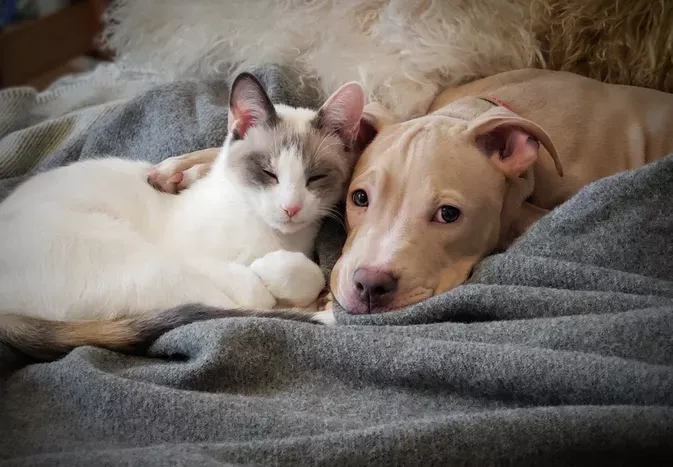Fact or Fiction: Can Pets Get Seasonal Depression?
Updated on 04/26/24

Fact or Fiction: Can Pets Get Seasonal Depression?
As the days grow shorter and the nights grow longer, many people start to experience the winter blues. But what about our furry friends? Can pets get seasonal depression too?
The Answer is Yes
According to experts, pets can experience seasonal affective disorder (SAD), just like humans. SAD is a type of depression that is triggered by changes in the seasons, typically starting in the fall and lasting throughout the winter months.
Symptoms of SAD in Pets
The symptoms of SAD in pets can vary, but some common ones include:
* Lethargy
* Sleeping more than usual
* Loss of appetite
* Weight gain
* Decreased activity level
* Irritability
* Anxiety
* Destructive behavior
Risk Factors for SAD in Pets
Certain factors can increase a pet's risk of developing SAD, including:
* Breed: Some breeds of dogs, such as Siberian Huskies and Alaskan Malamutes, may be more susceptible to SAD due to their genetic predisposition to low serotonin levels.
* Age: Senior pets may be more likely to experience SAD, as they may have reduced levels of serotonin.
* Health conditions: Pets with certain health conditions, such as hypothyroidism, may be more prone to SAD.
* Environment: Pets that live in areas with long, dark winters may be more likely to develop SAD.
Examples of SAD in Pets
Here are a few examples of how SAD can manifest in pets:
* A dog that normally loves to play fetch may become lethargic and uninterested in playing.
* A cat that is usually affectionate may become withdrawn and avoid social interactions.
* A bird that normally sings throughout the day may stop singing or sing less frequently.
Treating SAD in Pets
If you think your pet may be experiencing SAD, there are a few things you can do to help:
* Provide plenty of light: Make sure your pet has access to plenty of natural light, either by opening curtains or blinds or by using artificial light.
* Increase exercise: Exercise can help to boost serotonin levels. Take your pet for walks or playtime more often.
* Adjust their diet: Some foods can help to improve serotonin levels. Talk to your veterinarian about adding foods rich in tryptophan to your pet's diet.
* Use pheromone diffusers: Pheromone diffusers can help to create a calming environment for your pet.
* Consider medication: In some cases, your veterinarian may prescribe medication to help treat your pet's SAD.
Prevention is Key
The best way to prevent SAD in pets is to provide them with a healthy lifestyle that includes regular exercise, a balanced diet, and plenty of sunlight. If you notice any changes in your pet's behavior during the winter months, talk to your veterinarian to rule out any underlying health conditions and to discuss treatment options.
Conclusion
SAD is a real condition that can affect pets, just like humans. By understanding the symptoms and risk factors of SAD, you can help your pet stay happy and healthy all year long.
Explore More Pets

Cat Behavior Problems
How to Stop Aggression in Kittens

Long-Haired Cat Breeds
Siberian Cat: Breed Profile, Characteristics, & Care

Cat Behavior Problems
How to Stop Kittens From Scratching and Biting

Long-Haired Cat Breeds
Turkish Angora: Cat Breed Profile, Characteristics & Care

Basic Training
How to Socialize Your Kitten

Short-Haired Cat Breeds
Cute Pictures & Facts About Calico Cats & Kittens

Litter Box Training
Training Your Kitten to Use the Litter Box

Long-Haired Cat Breeds
10 Fun Facts About White Cats